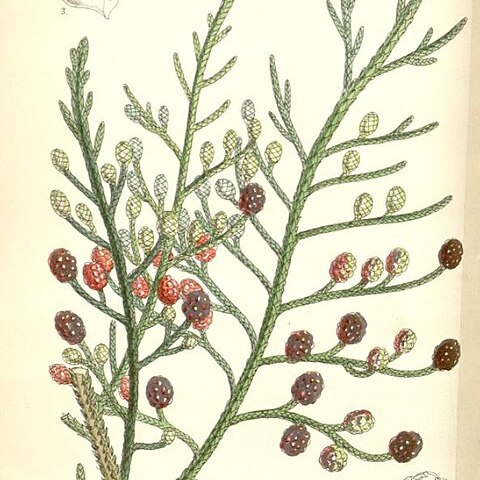Dioecious, densely-branched, prostrate shrubs. Branches spreading to c. 1 m. Adult leaves scale-like, imbricate, decussate, obtuse, with a rounded dorsal keel, c. 1 mm long, c. 1 mm wide. Male cones ovoid, recurved, c. 2-4 mm long. Female cones ovoid, 6-8 mm long, comprising 20 or more fertile scales which become fleshy and scarlet at maturity; ovules inverted and partly covered by the epimatium.


